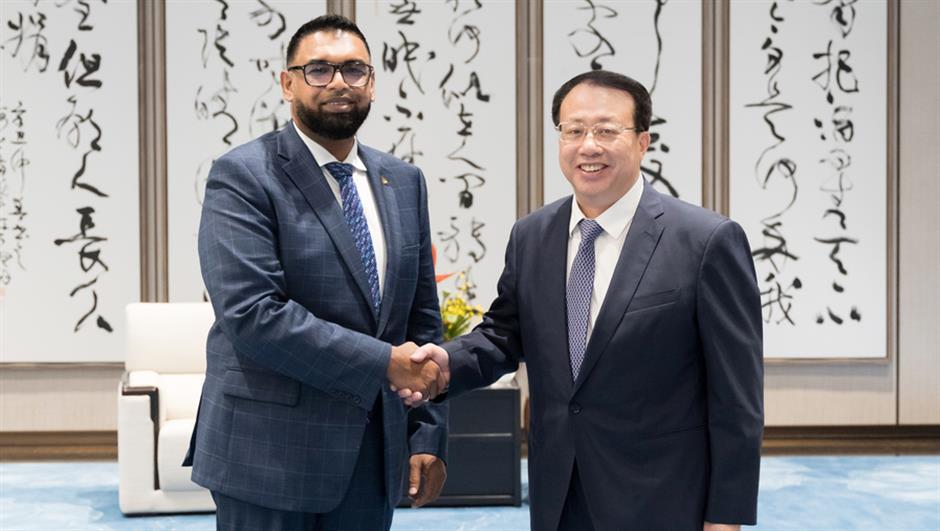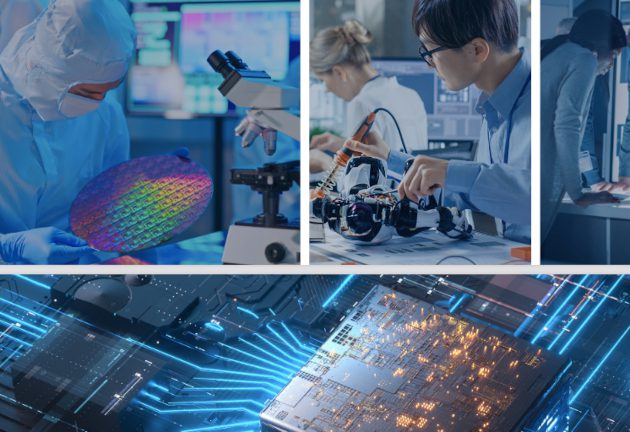In July 2022, the US authorities enacted the Creating Useful Incentives to Produce Semiconductors for America and Science Act and appropriated $39 billion for the CHIPS for America Fund.
The fund offers monetary incentives for constructing, increasing and equipping home semiconductor manufacturing services in addition to supporting the availability chain for manufacturing gear, supplies and companies. The fund additionally offers $11 billion for joint authorities and industrial R&D in semiconductor expertise.
This expertise is vitally essential as a result of semiconductor gadgets and the microelectronics they allow are uniquely essential to just about all fashionable industrial and nationwide safety actions. Communications, superior weapons, fashionable manufactured merchandise and key rising applied sciences, like synthetic intelligence, autonomous techniques and quantum computing, all depend upon microelectronics. Due to this fact, our nationwide financial well being, navy readiness and a big a part of future technological progress rely of the supply and utility of semiconductors.
Regardless of the important significance of semiconductors, the U.S. share of worldwide semiconductor fabrication capability fell from about 36% in 1990 to about 10% in 2020. By 2020, the U.S. share of essentially the most superior semiconductor gadgets had fallen to primarily zero, making the US completely depending on the worldwide semiconductor marketplace for these crucial parts.
Taiwan Semiconductor Manufacturing Co. produces roughly 60% of the world’s semiconductor gadgets. However about 93% of the world’s most superior semiconductor gadgets are made by TSMC. The rest of the world’s most superior semiconductor gadgets are made in South Korea. Both political or navy initiatives in East Asia may make the availability of those gadgets susceptible.
The historical past of the transistor started in 1947 with its invention at Bell Labs in Murray Hill, New Jersey. The inventors, John Bardeen, Walter Brattain and William Shockley, shared a patent for his or her invention in 1950 and the Nobel Prize in physics in 1956. The world’s first industrial transistor manufacture started on the Western Electrical manufacturing facility on Union Boulevard in Allentown in 1951.
Roughly 10 years after that pioneering work, Martin Atalla and Dawon Kahng, additionally at Bell Labs, invented the steel oxide semiconductor transistor. The simplicity, versatility and ease of fabrication of the MOS transistor made it the superior alternative for high-level manufacture. Nearly all of right this moment’s fashionable semiconductor manufacture makes use of MOS transistors.
In 1958 Jack Kilby, a Texas Devices engineer, invented an entire digital circuit consisting of transistors and different electrical parts on a single piece of germanium. Interconnection of the parts was supplied externally. For his built-in circuit, Kilby obtained the Nobel Prize in physics for 2000. Roughly six months after Kilby’s announcement, Robert Noyce at Fairchild Semiconductor proposed a extra sensible configuration. Noyce proposed utilizing silicon fairly than germanium and included inner copper traces for electrical connections. Later variations changed the copper traces with photograph outlined aluminum. Trendy built-in circuits are primarily based on Noyce’s idea.
Within the years following, industrial improvement of semiconductors featured daring entrepreneurs and particular person initiative. However there was extra. Within the early years, a kind of stealth U.S. authorities industrial coverage stimulated the expansion and route of the home trade.
The U.S. Division of Protection’s purchases within the home semiconductor market within the Nineteen Fifties and ’60s supplied regular demand and earnings to U.S. producers that helped underwrite the associated R&D. Authorities additionally supported AT&T’s de facto phone monopoly. And AT&T’s monopoly earnings financed Bell Labs’ R&D labs to offer a gradual stream of skilled engineers carrying readily licensed expertise to trade. At present’s CHIPS for America Fund is a contemporary analog of that early authorities assist.
Most voters and elected officers perceive microelectronics poorly, if in any respect. Even fewer perceive the science, expertise and economics of semiconductor manufacture. Our collective ignorance doesn’t change the truth that essentially the most fashionable microelectronics is and shall be important to our economic system and nationwide safety. That suggests the necessity for home microelectronics R&D, expertise and manufacture.
So, our nationwide self-interest is served by the success of the CHIPS for America Fund. As voters and knowledgeable residents we have to insist that our elected representatives maintain abreast of the actions and outcomes that come from this initiative. We will’t permit ourselves and them to be distracted by essentially the most just lately found political drama.
Glen T. Cheney of Bethlehem is a retired supervisor of microelectronic analysis and improvement with Bell Laboratories in Allentown and Sandia Nationwide Laboratories in Albuquerque, New Mexico.




